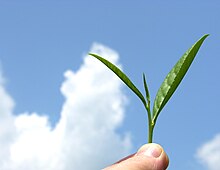 I have always wondered how my favourite drink was made. So, I went to look up on it. I learnt that tea is an evergreen plant that grows mainly in tropical and subtropical climates.
I have always wondered how my favourite drink was made. So, I went to look up on it. I learnt that tea is an evergreen plant that grows mainly in tropical and subtropical climates.Only the top 1-2 inches of the mature plant are picked. These buds and leaves are called flushes. A plant will grow a new flush every seven to 15 days during the growing season, and leaves that are slow in development tend to produce better-flavoured teas.
Pests of tea include mosquito bugs that can tatter leaves, so insecticides may be sprayed.
A tea plant will grow into a tree of up to 16 m if left undisturbed (That's tall!), but cultivated plants are pruned to waist height for ease of plucking. I would do that too!
Teas are divided into categories based on how they are processed. There are at least six different types of tea: white, yellow, green, oolong, black (Which is called red tea in China), and post-fermented tea (or black tea for the Chinese) of which the most commonly found on the market are white, green, oolong, and black. Some varieties, such as traditional oolong tea and Pu-erh tea, a post-fermented tea, can be used for medicinal purposes.
If the leaves from the tea plant are not dried immediately, the tea may become unfit for consumption, due to the growth of undesired molds and bacteria. At the minimum, it will make the taste of the tea unpleasant.
I now know lots about tea! Hooray!:D
No comments:
Post a Comment